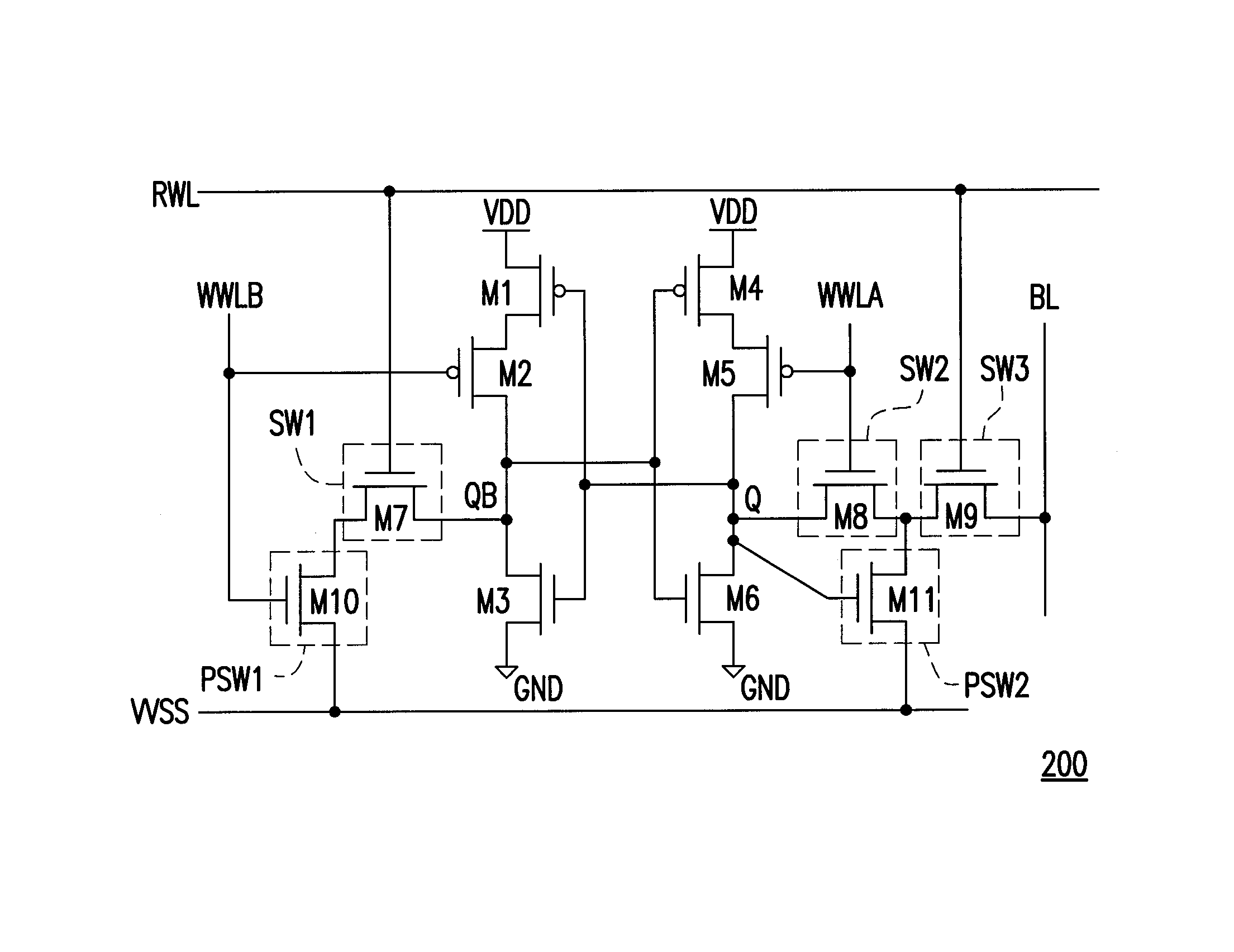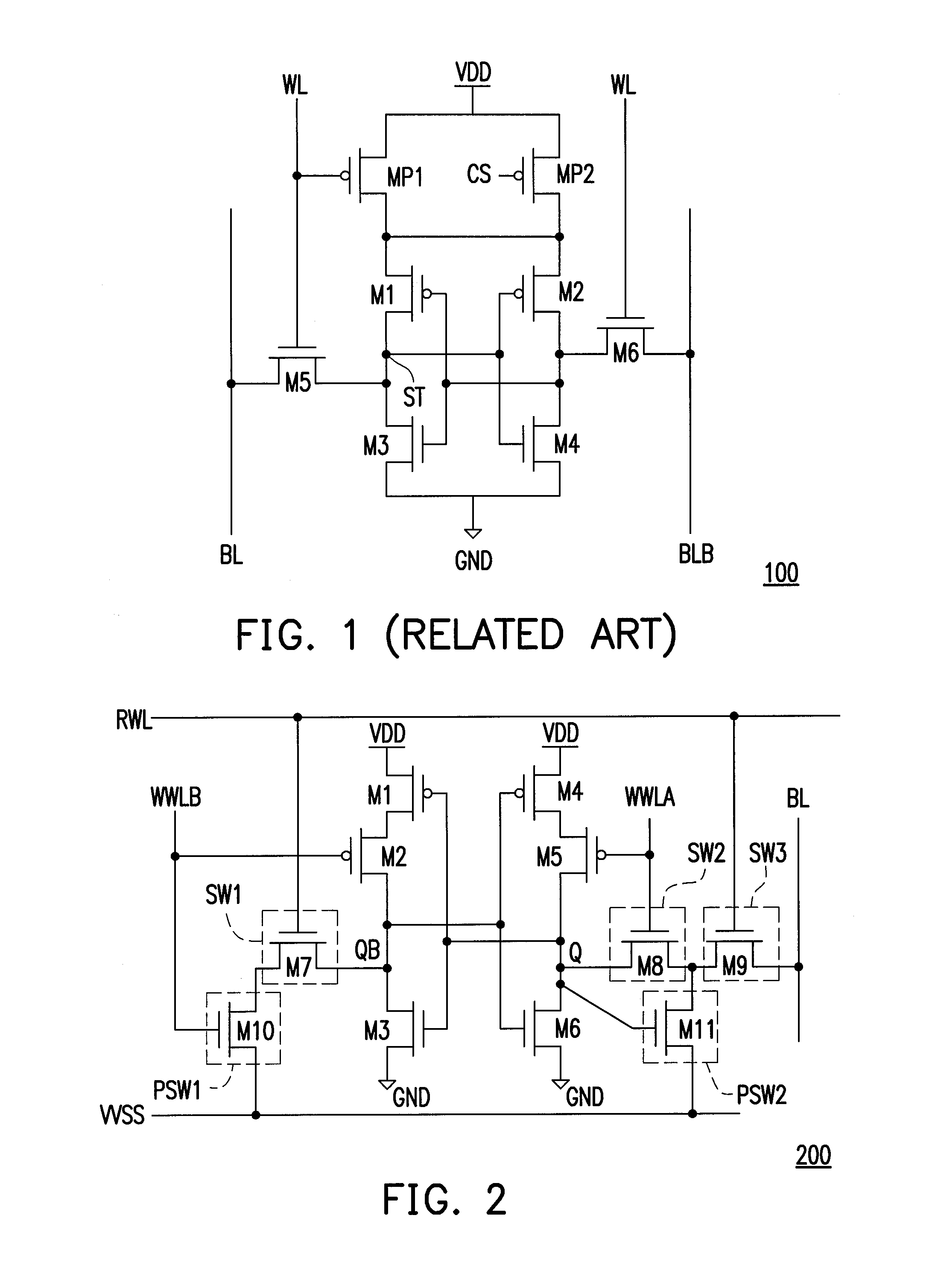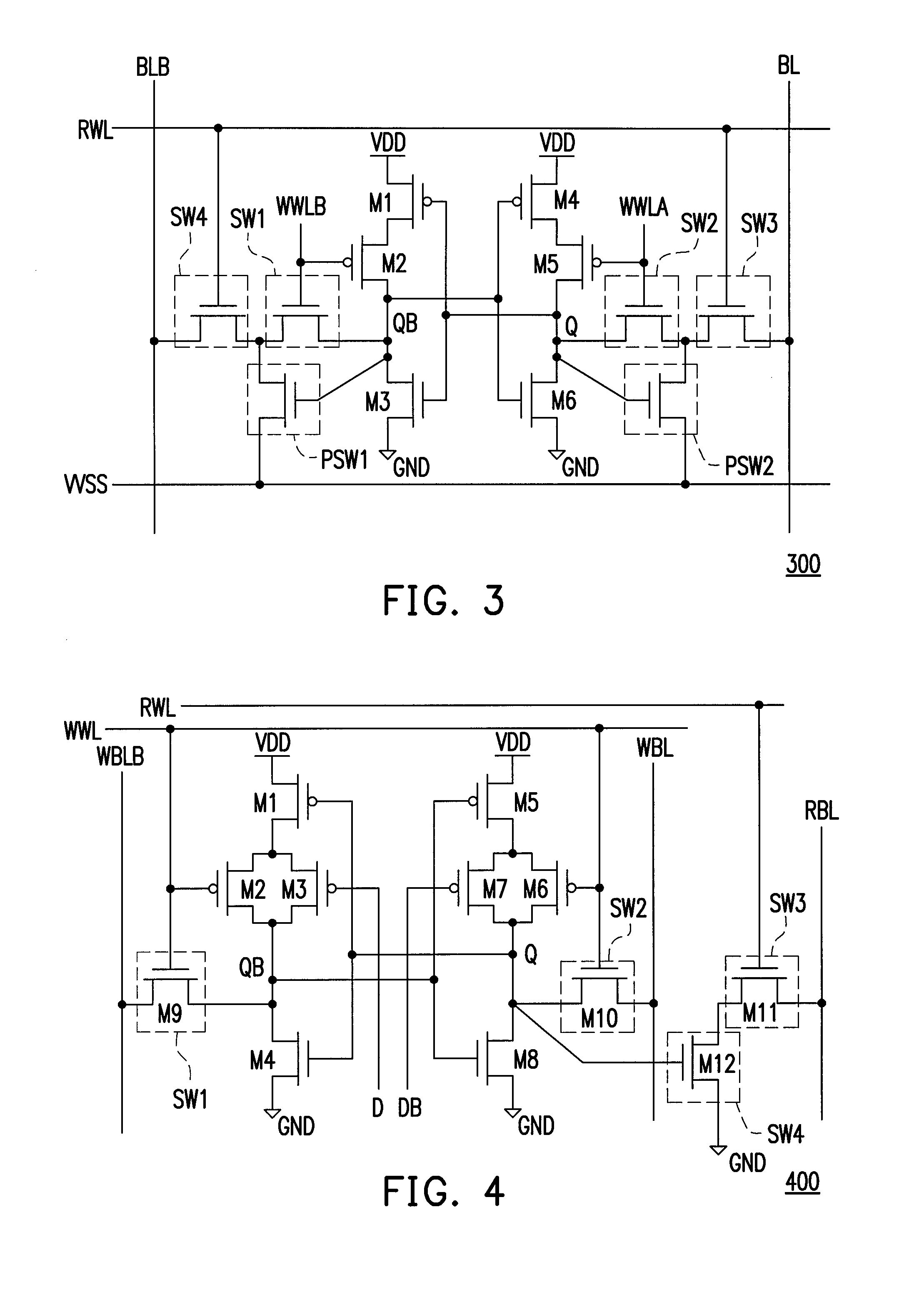Static memory and memory cell thereof
a static memory and memory cell technology, applied in static storage, information storage, digital storage, etc., can solve the problems of no p-type transistor for performing such an operation, voltage on the storage point st, and inability to reliably control the writing process, so as to achieve the effect of reducing the channel width of the transistor in the static memory cell, reducing the time required for writing data, and improving the writing efficiency of the static memory
- Summary
- Abstract
- Description
- Claims
- Application Information
AI Technical Summary
Benefits of technology
Problems solved by technology
Method used
Image
Examples
Embodiment Construction
[0022]Reference will now be made in detail to the present preferred embodiments of the invention, examples of which are illustrated in the accompanying drawings. Wherever possible, the same reference numbers are used in the drawings and the description to refer to the same or like parts.
[0023]FIG. 2 is a diagram of a static memory cell 200 according to an embodiment of the present invention. Please refer to FIG. 2, the static memory cell 200 includes transistors M1-M6, switches SW1-SW3, and pull-down switches PSW1-PSW2. The first terminal of the transistor M1 is coupled to a reference operating power supply VDD. The first terminal of the transistor M2 is coupled to the second terminal of the transistor M1, the second terminal of the transistor M2 is coupled to an output terminal QB, and the control terminal of the transistor M2 receives a write word line signal WWLB. The first terminal of the transistor M3 is coupled to the output terminal QB, the control terminal of the transistor ...
PUM
 Login to View More
Login to View More Abstract
Description
Claims
Application Information
 Login to View More
Login to View More - R&D
- Intellectual Property
- Life Sciences
- Materials
- Tech Scout
- Unparalleled Data Quality
- Higher Quality Content
- 60% Fewer Hallucinations
Browse by: Latest US Patents, China's latest patents, Technical Efficacy Thesaurus, Application Domain, Technology Topic, Popular Technical Reports.
© 2025 PatSnap. All rights reserved.Legal|Privacy policy|Modern Slavery Act Transparency Statement|Sitemap|About US| Contact US: help@patsnap.com



